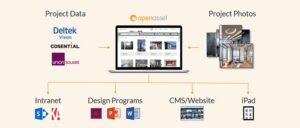What is Digital Transformation?
Jul 19, 2019

Digital transformation has been a discussion topic for the last half decade. But as with any subject based around emerging technology and new ways of working, it can be tough to separate hype from reality, fact from fiction. So, digital transformation – what does that mean?
Digital Transformation is an often mis-used term. Many use it to describe the modernization of legacy systems, the rethinking of operating models and the migration to the cloud. This would be more accurately described as ‘Digital Optimization’. While Digital Optimization is a great start, it’s not truly what digital transformation is.
As with any huge subject, digital transformation draws in differing opinions and points of view. However, most people agree that digital transformation is bigger than the technology alone; it is an ongoing process of change that needs to be incorporated into the culture of an organization.
Digital Transformation Defined
Digital transformation is the involvement of digital technology throughout all areas of an organization; it is a profound rethinking of technology, people, and processes. The resulting transformation becomes a fundamental change in how the business operates and delivers value to its customers.
Digital transformation is not a single, one-off project with a start and a finish; it is the start of a journey, and that results in constant evolution.
However, digital transformation doesn’t come out of a box and isn’t a one-size-fits-all solution. But the theory applies to most industries, the trick is making it relevant to your company and your clients. Think about what your company does – where are the gaps in your working process? Understand where tech, process, and people improvements can be sensibly inserted into your business and watch your workflow improve.
Digital transformation enhancements to don’t need to be huge; simple changes and agile solutions can often be more impactful that looking for a complex answer to a problem.
Why Does Digital Transformation Matter?
Emerging technologies have caused customer expectations to grow exponentially. To gain any competitive advantage, companies need to learn to merge technology with strategy, while ensuring customer experience is at its core.
It is also important that the human element – employee experience – is also accounted for. Having a strategy and the tech to implement it is worthless without an engaged workforce to drive it.
Business leaders are taking notice of digital transformation and are making it a priority. IDC forecasts that, by 2020, 30% of G2000 companies will have allocated capital budget equal to at least 10% of revenue to fuel their digital strategies. The investment in digital transformation, much like the process itself, is set to be a continual one. In fact, IDC predicts that worldwide spending on digital transformation will be nearly $2 trillion in 2022.
What Does Digital Transformation Mean for Businesses?
Throughout history, many companies have failed to innovate at a time when the market is changing, and fell behind the competition (or even disappeared altogether). Arguably Digital Transformation is a moment in history where companies need to decide how their future might look.
It says volumes that 65% of companies are already either managing a Digital Transformation program or are planning to start one in the next 12 months.
Digital transformation is driven by the simple desire to make work better for everyone, from employees to customers. A key part of digital transformation is understanding what technology can help a business achieve.
That doesn’t mean doing the same things as before, only faster. It means adapting processes to make the most of technology investments.
The IDG surveyed what ‘digital business’ means to organizations; the following three areas were found to be the most sought after:
- Enable worker productivity through tools such as mobile, data access and AI-assisted processes
- Ability to better manage business performance through data availability and visibility
- Meet customer experience expectations
Digital transformation allows businesses to reconsider everything, including processes, departmental structures and ways of working. It can help remove barriers between teams and increase efficiencies.
Organizations who leverage digital transformation are able to streamline production, build better workplaces for their employees and improve their overall customer experience. Over a third of companies (31%) already have a digital transformation programme in place, with 31% looking to launch imminently. There is no doubt that many businesses, across many industries, are realizing its importance.
What Does Digital Transformation Mean for Customers?
Digital technology has revolutionized consumer habits. Customers have become accustomed to getting what they want when they want it. The modern buyer is constantly connected and aware of what technology can deliver. Digital transformation forces organizations to rethink how they interact with their customers, allowing them to become proactive, relevant and personal.
Today’s customers want to be treated as unique individuals. Digital transformation enables businesses to recognize their customers and know their preferences. Research by Salesforce shows that 76% of consumers think companies should understand their expectations and needs. This isn’t just restricted to B2C; B2B customers want to work with suppliers that show they understand their needs.
Technology has also created the expectation of a seamless multi-channel experience. Customers expect the same service regardless of time, location or channel. They demand instant gratification, and only by embracing technology can organizations deliver. It’s no wonder that 44% of companies have already moved to a digital-first approach for customer experience.
Ultimately digital transformation requires changing business models, harnessing digital assets and embracing the right combination of technologies. The result is an improvement in the lives of employees and customers alike, not to mention an organization’s bottom line.





